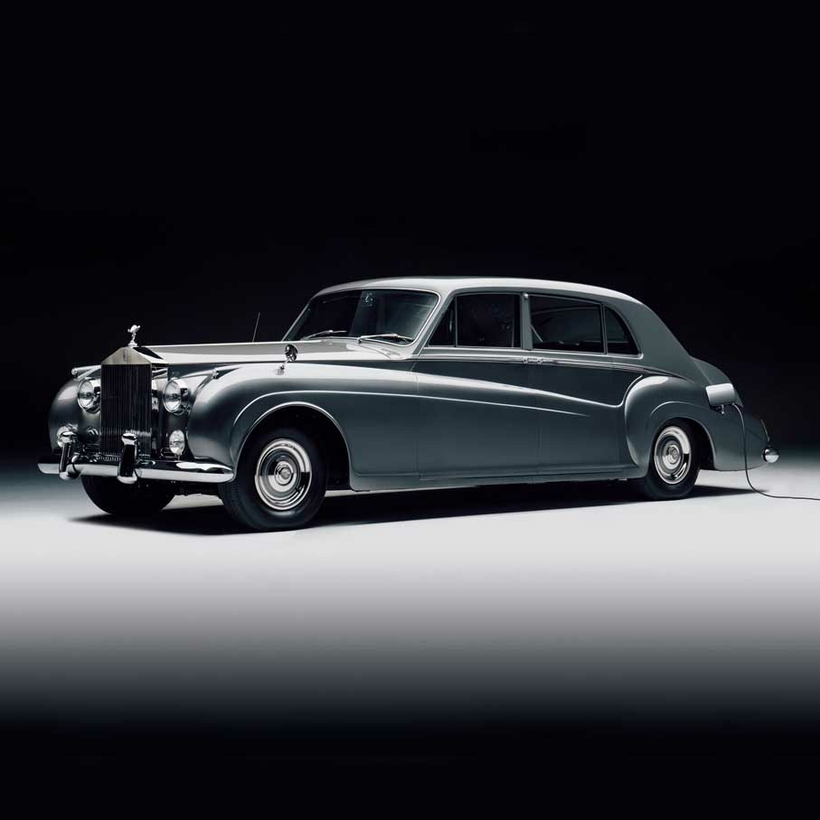When John Lennon unveiled his Rolls-Royce Phantom V in a psychedelic yellow paint job in 1967, he was confronted by an elderly woman who screamed: “You swine! How dare you do that to a Rolls-Royce!”
No such abuse, however, was hurled at the creators of the first fully electrified Phantom V as it pulled out of a workshop in Silverstone, the home of British motor racing, for its debut drive this week.
It is claimed to be the only classic Rolls-Royce in the world that has been stripped of its petrol engine in favor of green power and is available to buy.
Lunaz, the British company behind the conversion, is adding 30 of the limousines to its line of electrified classic cars, which includes Jaguars and Bentleys. Its vintage collectables are carefully transformed into battery-powered modern machines.
The company was born amid growing concerns over air pollution, as wealthy collectors and businesses become reluctant to be seen behind the wheel of an ageing gas-guzzler.
An increasingly hostile legislative climate toward ownership of thirsty classics is another problem Lunaz hopes to solve.
On Wednesday, after years of development, the electric Phantom rolled out of its hangar and cruised along leafy Northamptonshire roads.

The Beatles’ “Drive My Car” blared out through the interior speakers as it chauffeured its first passenger, a Times reporter, for 20 minutes.
Despite having just 38 miles on the clock, the vehicle could have continued for another 300 (or five and half hours) on a single charge of its 120-kWh battery.
Its capacity is enough to travel from London to Newcastle or, according to Lunaz, complete “20 chauffeured runs from Heathrow to the Ritz”.
“It’s a moving piece of artwork. No car in the world matches a Phantom for presence, style and significance,” said David Lorenz, the company’s founder.
“Through electrification we proudly further the legacy of the ‘best car in the world’, making Rolls-Royce ownership a relevant choice for a new generation.”
Its capacity is enough to travel from London to Newcastle or, according to Lunaz, complete “20 chauffeured runs from Heathrow to the Ritz.”
Following a 30 percent surge in demand this year for electrified Rolls-Royce Phantoms and Clouds, Jaguar XK120s and Bentley S2 Flying Spurs, Lunaz is expanding its operation and moving to a bigger site in Silverstone where it can convert 100 cars a year.
In the workshop, cars bought at auction or from collectors are completely stripped down and the internal combustion engine is removed.

Each component is weighed and the car is 3D scanned to allow engineers to create detailed models that guide the restoration process.
A balance is struck between the electrification and traditional car-building to ensure that the vehicles remain indistinguishable from their original versions.
The Phantom’s Sixties pink Bakelite telephone for passengers has been upgraded and refitted with smartphone features. Wifi, audiovisual entertainment and a satellite navigation screen have also been subtly integrated into the interior.
Its original woodwork was restored and finished but with a contemporary satin treatment and rose gold inlays.
Only a keen eye would notice that it lacks an exhaust at the back or that the petrol cap is now a charging port.
Prices start at $451,000 for a Silver Cloud and $644,000 for a Phantom.
Lennon’s Rolls outraged the establishment when he first showed it to the world with a drive along Piccadilly.
“Ugly, uncharming and pretentious bit of anti-taste,” remarked one critic.

The old lady who heckled him was so unhappy that she briefly attacked it with an umbrella — or at least that’s the way Lennon told the story.
However, the bosses at Lunaz are less concerned about a backlash and claim to have not just converted their cars, but also traditionalist collectors.
“We have found that purists are actually fascinated by and supportive of what we’re doing,” Mr Lorenz said. “Modern design has to take into account aerodynamics, wind, and so on.
“There is so much that goes into design that isn’t about the purity of the aesthetics. Whereas with these cars, we’ll draw an aesthetically beautiful piece and we’ll make it. We’ll work out how to construct it around the art.”

